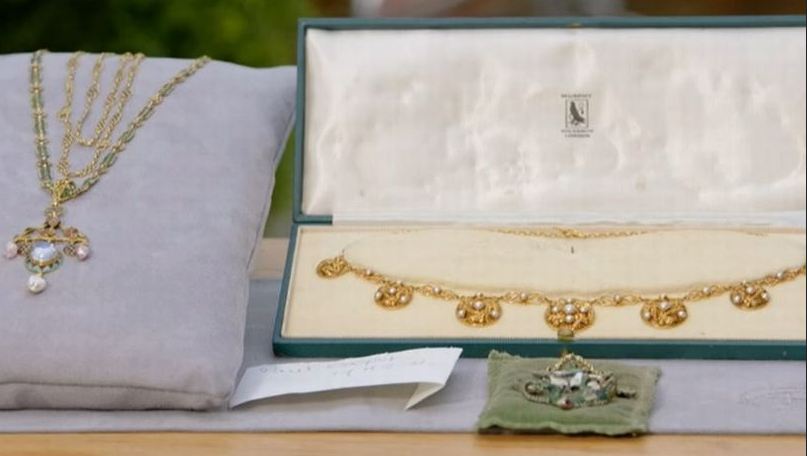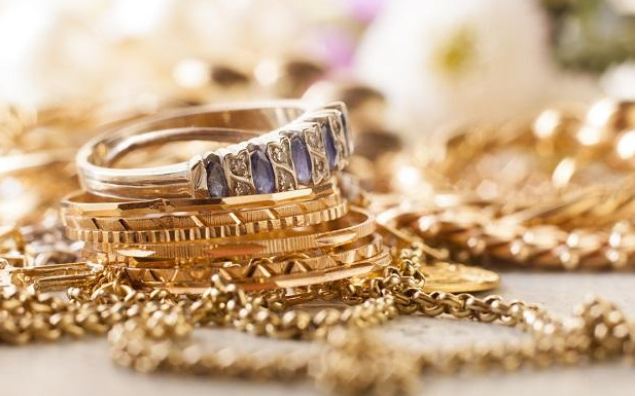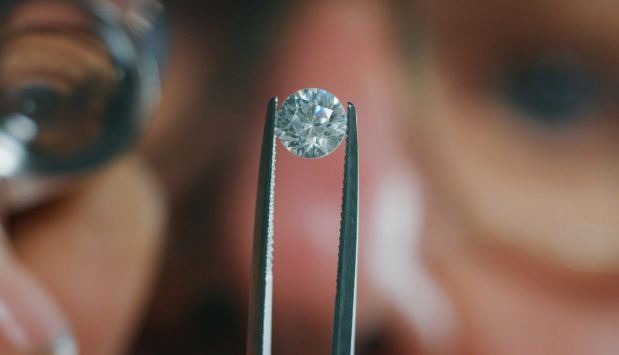
Jewellery is the staple of every woman’s wardrobe. It’s what defines your style. Your dress shapes your personality. So, don’t just dress for the sake of it. Instead, you always dress to impress. Let your beauty sparkle. Accessorize like a pro. Blend different shapes, colours, and textures. But how do you go about this? Well, here’s how to coordinate jewellery like a pro!
Create Layers
Experiment with different types of colours and textures. Create appealing layers with your bangles, rings, and necklaces. When layering necklaces, for instance, you may want to consider combining different lengths. This will go a long way in making you look stylish and sophisticated. Rings and bracelets can be mixed and matched in all sorts of attractive combinations.
You can even try wearing multiple earring styles. It’s super easy. All you need is to collect jewellery pieces of different sizes, textures, and designs. Then, try them on in various combinations to see what looks better.
Get Some Sparkly Earrings
When it comes to beauty, earrings are extremely useful. They play a significant role in emphasizing your looks. So, be sure to choose unique earrings that perfectly frame your face. Plus, they should complement your hair and skin tone.
Combine Different Metals
Don’t be afraid to mix different colours. You don’t necessarily have to stick with gold or sterling silver jewellery. You can as well try pendants that contrast with the colour of your chain. That would bring out a perfect look. When paired with metal colours and layered necklaces or bangles, pendant earrings can be outstandingly beautiful.
Determine the Focal Point
Where’s the focal point? Is it your eyes, your face, or your neck? Would you like people’s attention to be drawn to those areas? Well, go ahead and choose the best jewellery. Showcase your beauty in style.
If you’re wearing sparkly earrings, for instance, then opt for subtle, necklaces and rings. Or you can even do away with the necklace. All items shouldn’t be bold. Instead, you should know how to create a balance between them.
Expand Your Wardrobe
Do you have some free time? Well, you may want to spend this time trying different outfits with various pieces of jewellery. Try out as many combinations as you can. This can help you determine what works best. Don’t just focus on clothes and jewellery. You can as well add in other accessories like watches, scarves, as well as, bags.
You’ll actually be astonished at what you can come up with. If you don’t have many pieces of jewellery, consider purchasing a few extra pieces. Look for items that’ll extend and add interest to your wardrobe. Invest in sparkly things that’ll help you make a statement.
Break the Rules
Fashion trends greatly affect what people wear. However, it isn’t a good idea to keep the following fashion at the expense of your personal preference. You don’t have to become a fashion slave for you to stay stylish. If you do this, you might end up losing yourself. Plus, it can be extremely expensive.
Thus, it’s always important to try evolving your own style. Come up with something that suits your personality and makes you feel confident. Of course, that might not look fashionable right now but if you own it then you’ll definitely be fine.
Invest in jewellery that perfectly matches your colouring frame and overall sense of style. When trying to accessorize, be sure to take all these aspects into consideration. That’s the only way through which you can achieve your desires. Remember, your personality is a crucial part of your well-being. So, don’t compromise on it when choosing jewellery items to wear. Make sure that what you are wearing truly showcases your personality.
Try Wearing Your Rings with Panache
Stacking rings can be incredibly stylish. It can add so much versatility to your wardrobe. Plus, mix and matching them can significantly improve your looks. For a more minimalist look, you can consider stacking only two simple rings.
Depending on your preference, you can either match rings or mix different colours and textures. When wearing multiple rings, avoid putting on more than one ring on each hand. Simply wear an odd number of rings on each hand and you’ll be good to go. Remember, you can always break the rules. When it comes to beauty, everyone has their own style. And there’s an endless list of jewellery items you may want to accessorize with.
Choose Your Necklace Wisely
Make sure that your necklace or pendant is visible. Unless it’s a sentimental piece, you’ll want people to see your beautiful jewellery. So, be sure to match the necklace to your neckline. This will go a long way in enhancing your outfit.
If you’re wearing a V-necked outfit, for instance, then a pendant sitting above your cleavage can work wonders. For a higher necked outfit, a long necklace would be incredibly beautiful. A rounded necklace is great with other rounded necklines.
At times, it’s good to go without a necklace. If you’re wearing a beautiful pair of earrings, for instance, then you shouldn’t necessarily put on a necklace. Depending on your outfit, you can either wear a necklace or not. If you’re wearing a high-necked outfit, don’t put on a necklace.
Don’t Always Wear Sentimental Jewelry
You don’t have to wear sentimental items regularly. It isn’t a must for you to wear your engagement ring every day. But if you must wear it daily, then consider layering it with other jewellery pieces. This will go a long way in adding interest and diversity to your style. For instance, you may want to get yourself a longer or an adjustable chain that hangs beneath your clothing if it doesn’t match the colour of your outfit.
You don’t always have to stick with the rules. Dressing up is a personal matter. So, you can always do it the way you want. Your style is your personal decision. It defines who you truly are. Settle for whatever fits you.
Try Different Shades
In the past, it was considered awkward to mix different metal colours. But with the current developments, that’s no longer the case. There’s no need to restrict yourself to sterling silver and gold jewellery.
Feel free to try out pendants featuring a different chain colour, or layered necklaces in different metals to create an elegant impression. When done right, this fashion trend can be highly impressive. So, why limit yourself to specific options when you can easily combine different metals? Let jewelers help you combine different metals today!
Match It Up With Your Clothing
Before you start dressing, think about your clothing. Once you’ve decided on the type of jewellery you’d like to wear, go ahead and choose matching clothing. Make sure that your clothes work perfectly with the jewellery, as well as other accessories. Doing this will ensure that you end up with the right combination that’ll make you look fashionable
Choose the Right Sizes
With the right jewellery, dull outfits can be transformed into something special. If you’re wearing a simple outfit, consider wearing timeless jewellery pieces. This will ensure that your simple outfit is brought to life.
However, if you’re wearing bold clothing, it’s often better to go with smaller jewellery pieces. The secret is to accessorize with both small and larger pieces of jewellery. Plus, you should always consider combining different shades, textures, and designs. This will go a long way in enhancing your beauty and making you look trendy.
Dress For The Occasion
Do you regularly type on the keyboard? If so, you should avoid wearing dangling wrist jewellery. And if you’re dressing for work, you should avoid wearing bangles and hanging bracelets. Before putting on your jewellery, you should carefully consider where you’re going. Think about what you’ll be doing, as well as, how your jewellery comes off to onlookers. There’s nothing disappointing like wearing the wrong type of jewellery for a given occasion.
Where do you want people’s attention to be drawn? Are you dressing up for a special event? Well, if you’re wearing something that’s intended to catch the eye, then it’s better to make the focal point on your neck, ears, or eyes.
If you’re wearing a pricey necklace, for instance, then opt for more subtle rings, as well as earrings. This will help you strike a perfect balance between the contrasting shades. And that’s exactly what you’re dying to achieve, right? You want to step out in style and let the world know that you’re the beauty queen.
Mix Busy Patterns With Simple Jewelry
When paired with ornate jewellery, busy patterns can be highly impressive. Instead of showy accessories, consider investing in solid bracelets, watches, as well as earrings.
Plus, you should also take into consideration the material of your outfit. If your wardrobe features heavily stitched fabric, ornate jewellery can be an excellent choice for you. Besides, wearing ornate jewellery will augment your boldness and enhance your overall appearance.
Highlight Your Face With Statement Rings
If you want to highlight your face, consider wearing a pair of statement earrings. Look for the flashy ones that enhance your facial appearance. When making your selection, be sure to consider the shape of your face and the colour of your eyes.
If you have a heart-shaped face, for instance, you may want to settle for drop earrings. And if your face is oval-shaped, you should consider studs or triangular earrings. It all starts with understanding the shape of your face. From there, choosing the perfect jewellery will be a walkover.
Be Mindful Of Your Skin Tone
Jewellery shouldn’t just match your outfit. If you want to stay trendy, consider highlighting your skin with jewellery. For you to win at accessorizing, you should know how to enhance the look of your skin. Silver is a beautiful metal that illuminates most natural tones. On the other hand, gold works well with darker skin tones.
Red, blue, and white gold gems blend well with cooler skin tones. For warmer skin tones, you can choose yellow, green, or orange gemstones.
Strike A Balance
Rubies and canary diamonds make a statement by themselves. Both of these colours are bold and fiery. They look great when paired with black and white. However, they can as well pair nicely with blue and purple. Most stylists derive their inspiration from the colour wheel.
According to the colour wheel, warm and cool colours blend one way. And on the other hand, they also blend well in the opposite. For instance, deep green and dark blue jewellery items pop against an orange dress.
Striking a perfect balance between cool and warm shades is basically what beauty is all about. Opposites attract. So, don’t limit yourself to matching options.
Go For Diamonds
Are you finding it hard to coordinate your jewellery with different outfits? If so, consider opting for diamonds. When exposed to light, the classic white diamond will elegantly show off all the shades that make up its composition. And this will make it easier for you to stay stylish. You can comfortably wear diamonds with any outfit.
Key Takeaway
Do you have an overflowing jewellery collection, but you don’t seem to be getting anything meaningful out of it? Then, think differently. Embrace creativity. It’s time you gather confidence and start trying different styles.
Go through your collection and identify missing items. And once you’ve done that shop around for those pieces of jewellery. Remember, fashion is all about being unique. Look for things that compliment your sense of style and personality. Incorporating fashionable jewellery into your look is always an incredible idea.
The Bottom-Line
So, you have finally decided to take your beauty to the next level? You’re now ready to turn things around, right? Do you want to make the most out of your jewellery collection and still remain stylish? Well, it all starts with being confident. Don’t be afraid to try new things. Don’t be conservative. That way, you’ll be able to stay fashionable. The above guide offers practical tips to help you accessorize like a pro. Good luck!

